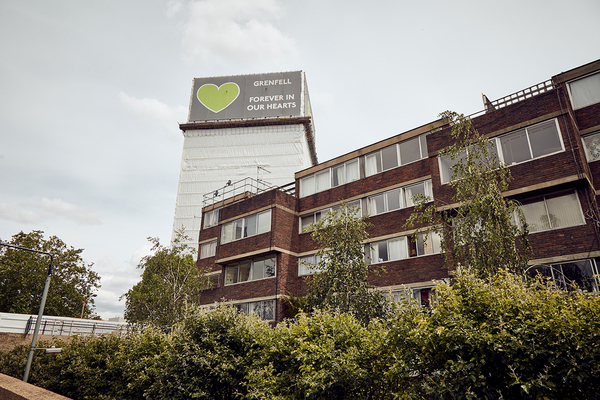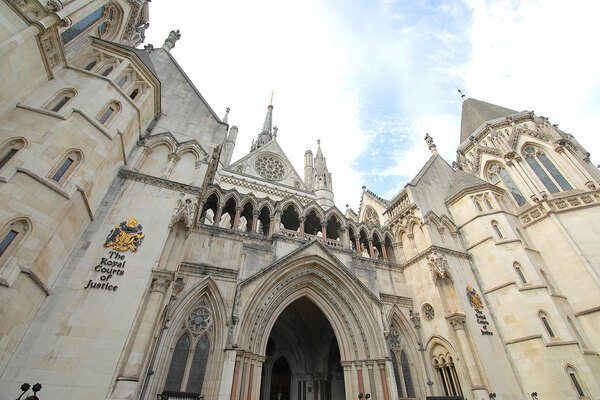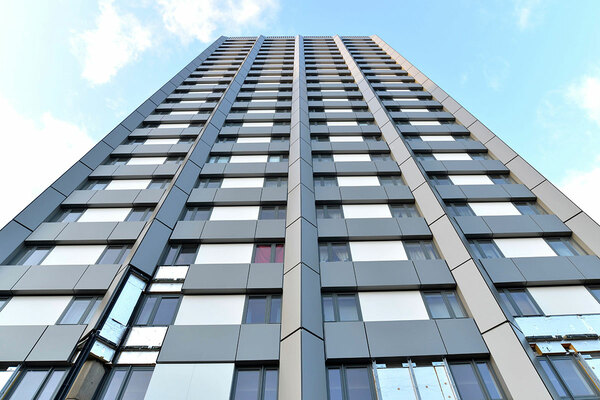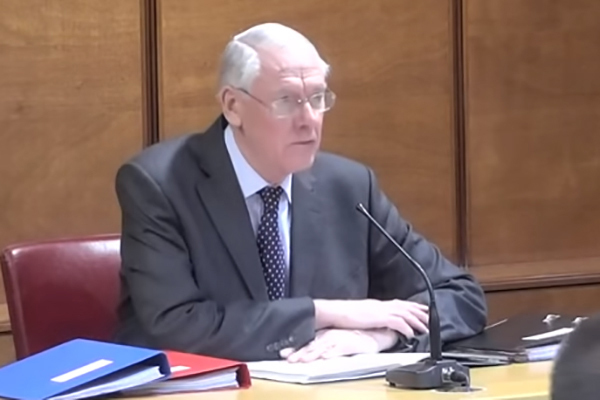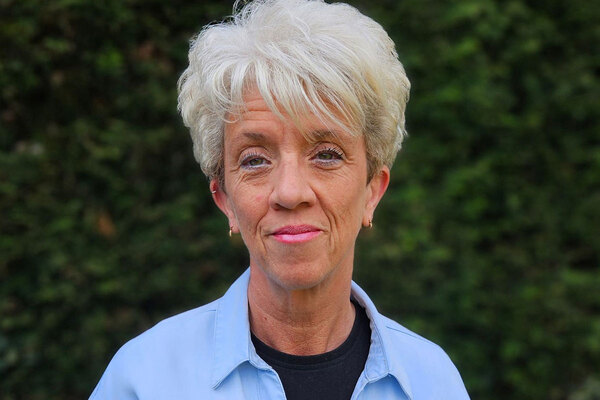You are viewing 1 of your 1 free articles
Grenfell Inquiry experts attended meeting with combustible insulation lobbyists, minutes reveal
Two of the Grenfell Tower Inquiry’s independent experts attended a meeting held by lobbyists for the combustible insulation industry after advising against banning the material from tall buildings, minutes obtained by Inside Housing reveal.
Professors Luke Bisby and Jose Torero were among 11 ‘external representatives’ present at the meeting of the Modern Building Alliance – a group that describes itself as “an alliance of trade associations and companies that represent the plastics industry in the construction sector”.
The meeting involved discussion of the UK ban on combustible material on high rises, which was described as a “key commercial risk” to the industry.
Both professors – part of a specially assembled team of experts who advise the inquiry on technical fire safety matters – have previously advised the inquiry against extending the combustibles ban.
A spokesperson for the inquiry said that the experts were free to attend as “independent academics”.
The 29 November meeting, held in Brussels, was described as the first meeting of the organisation’s ‘Advisory Group Facade Fire Safety’, which it has set up to “build a roadmap towards safe and sustainable facades” in light of what was described as the “real and significant” problem of combustible facades.
The meeting involved discussion of the post-Grenfell ban on the use of combustible insulation on high rises – implemented in 2019 in the UK.
The minutes record that some participants felt it was a “key commercial risk” to the industry and would “harm the commercial interests of its members”. Human safety and property protection were also identified as top priorities.
The attendance of Professors Bisby and Torero at this meeting came after they had been invited to write short reports advising inquiry chair Sir Martin Moore-Bick on potential policy recommendations.
These reports, written earlier in 2019, were released in October when Sir Martin’s first phase report was published.
Professor Torero, a leading academic from University College London, wrote against the idea of banning materials based on a specific fire classification, concluding: “Introducing further bans/restrictions on the basis of classifications that are a product of inadequate testing will not resolve the issue of ‘adequate level of vertical flame spread’.”
Professor Bisby, who leads a team at the University of Edinburgh, included a whole section in his report on the combustibles ban. He wrote: “lt is my opinion that this approach (ie the ban) undermines the ‘outcomes based’ approach to fire safety that is supported by the Hackitt Review…
“While ‘a ban’ may be politically appealing under the circumstances, I am concerned that, by promoting a regulatory approach wherein designers are discouraged from being competent and taking responsibility for their designs, the manner of its implementation could lead to unintended and negative consequences across the construction sector.”
Sir Martin did not follow these suggestions in his eventual recommendations.
As the meeting in November was held under ‘Chatham House’ rules, the minutes do not record what the specific participants said or what position they took. Other academics and industry experts were also invited.
The minutes say: “A key commercial risk for the Modern Building Alliance specifically is the possibility of a ban of plastic materials used in facades. This has started in the UK for certain types of buildings and will perhaps spread beyond.
“Some would argue that this harms their commercial interests while not addressing fire safety and it will also jeopardise reaching energy efficiency targets in Europe… Some experts believe that designing fire-safe facades using combustible products is not a technical problem and it can be achieved relatively easy.”
Given the real risk of a ban, the minutes record the importance of all actors taking their responsibilities seriously and for the industry to “take initiative” and “show governments it can take actions that are better than seeing its products banned.”
Representatives from the plastic insulation industry present at the meeting included a senior director from Kingspan – a core participant in the inquiry, having provided an estimated 15% of the insulation for the cladding system and further insulation for the windows.
Both professors advised the inquiry during its first phase – which assessed the cause and spread of the fire that killed 72 people in June 2017. They are also due to return to provide expert opinions during the second phase of the inquiry’s work.
It is understood that neither professor was paid by the Modern Building Alliance – and the costs of attending were either self-funded or met by their universities. The inquiry was informed of their attendance.
A spokesperson for the Grenfell Tower Inquiry said: “As leading academics, Professor Torero and Professor Bisby must be free to attend conferences at which matters within their fields of study are discussed. They do so as independent academics and not as representatives of the inquiry.
“Both of them are well aware of the duties they owe to the inquiry and of the need to avoid being drawn into discussions that might compromise, or even appear to comprise, their independence. We have no reason to think that either of them has acted in any way that would cast doubt on their ability to give impartial expert advice to the inquiry.”
Both Professor Bisby and Professor Torero declined to comment and directed Inside Housing to the inquiry’s statement.
A spokesperson for the Modern Building Alliance said: “As a European industry association, we regularly engage with outside experts to help inform our views and gather a broad church of opinion. Fire safety of facades is an important topic for our industry; we therefore invited a group of experts from different countries and different backgrounds to share their perspectives and suggestions.
“They expressed a diverse range of views which will help to inform the Modern Building Alliance’s support for a data-driven, holistic and performance-orientated approach to advance fire safety in buildings.”
The inquiry is currently on hold until at least 24 February while the attorney general considers an application to provide an assurance to witnesses that their oral evidence will not be used to prosecute them.
Grenfell Tower Inquiry: phase two timeline
Sir Martin Moore-Bick, the retired judge who chairs the inquiry (picture: Grenfell Tower Inquiry)
The inquiry will be spread across eight modules, with the below timeline set out at the start of the inquiry:
Module one: 27 January to April 2020
Module one will examine the role, acts and omissions of the professionals involved in the refurbishment of the tower from 2012 to its sign-off on 20 July 2016.
Module two: 4 May to mid-June 2020
This section will examine the testing, classification, certification and marketing of key products used in the external wall, particularly the Reynobond PE 55 cladding panels and the polyisocyanurate insulation made by Celotex.
Module three: June to early October 2020
This will involve three topics: first, the complaints made by residents, particularly those relating to fire safety and the quality of the workmanship; second, the compliance with the requirements of the Regulatory Reform Order 2005 by the council, Kensington and Chelsea Tenant Management Organisation and the London Fire Brigade; and finally, active and passive safety measures in the tower. Closing statements for all the first three modules will then follow.
Module four: mid-October to mid-November 2020
This module will assess the performance of local and national government in the immediate aftermath of the fire.
Module five: mid-November 2020 to mid-February 2021
The firefighting operation will be reviewed in more detail in this section, including an analysis of training and the suitability of equipment.
Module six: February 2021 to May 2021
This module will turn the lens on central government, with a focus on the responses to previous incidents and
reports, coroners’ recommendations and things of that nature – including in respect of the building regulations and associated guidance, as well as fires and firefighting.
Module seven: May 2021
One week has been set aside for an assessment of the remaining expert evidence.
Module eight: timetable to be announced
This will assess any remaining evidence, including an attempt to establish how each of the deceased met their deaths. The bereaved and survivors have been invited to make submissions about other matters, which should be considered in this module.
The organisations involved in the refurbishment of Grenfell Tower
Picture: Jon Enoch
KCTMO: Kensington and Chelsea Tenant Management Organisation, the arm’s length management organisation responsible for providing housing management to Grenfell Tower. It was the end client which procured the refurbishment and oversaw it.
Rydon: Main contractor. It won a tender for the ‘design and build’ of the refurbishment project in March 2014, with a contract signed in October. It then held overall responsibility for the work, sub-contracting various elements to more specialist firms.
Celotex: The manufacturer of the RS5000 insulation which formed the majority of the insulation on the tower. The product is made from a combustible plastic called RS5000.
Arconic: A large multinational aluminium company, which manufactured and sold the Reynobond PE 55 cladding panels which were installed on the tower.
RBKC: As well as ultimately owning the tower, the Royal Borough of Kensington and Chelsea provided the ‘building control’ function for the refurbishment. This involved providing a completion certificate which effectively signed off the project as compliant with building regulations.
Studio E: Architect – first engaged by KCTMO as the principal designer for the wider refurbishment, it became a sub-contractor following Rydon’s appointment in 2014, working under the standard RIBA terms of business.
Harley: Specialist sub-contractor for the cladding. It was in contract with Studio E before Rydon was appointed, and then struck an agreement with Rydon for the design of the facade works.
Exova Warringtonfire: Fire engineer. Appointed by KCTMO in mid-2012 to provide a fire strategy for the building as it stood and for the refurbishment work. Three versions of the refurbishment version were produced, the last in November 2013. It provided ongoing advice after this point but was not directly engaged by Rydon.
CEP: The fabricator, responsible for cutting the panels into cassettes. CEP was one of a small number of ‘approved’ fabricators which worked closely with Arconic. Also supplied the window frames.
Max Fordham: The engineering consultant which worked for the TMO providing advice on energy strategy and sustainability. It was Max Fordham that identified Celotex insulation as a product which could meet the target insulation performance and was also thin enough to fit the design dimensions.
Kingspan: Produced and sold a smaller amount of combustible K15 insulation which was used on the tower.
Siderise: Produced and sold the cavity barriers.
Aluglaze: Produced and sold the window panels.
Artelia: The construction, design and management co-ordinator, employer’s agent and quantity surveyor, assisting KCTMO with its management of the contract.
Osborne Berry: The building contractor appointed by Harley to fit the cladding and window systems.
Kevin Lamb: An independently outsourced specialist cladding designer which provided Harley with detailed design drawings.
John Rowan and Partners: The clerk of works reporting to the TMO, responsible for site inspection and monitoring.
SD Plastering: A sub-contractor responsible for fitting the window surrounds.
JS Wright: A mechanical and electrical sub-contractor. It will have little involvement in module one.
Curtins Consulting: A structural engineer reporting first to KCTMO and then to Rydon. They will also have little involvement in module one.
Sign up for our weekly Grenfell Inquiry newsletter
Each week we send out a newsletter rounding up the key news from the Grenfell Inquiry, along with the headlines from the week
Already have an account? Click here to manage your newsletters
